Related Research Articles

In photography, exposure is the amount of light per unit area reaching a frame of photographic film or the surface of an electronic image sensor. It is determined by shutter speed, lens F-number, and scene luminance. Exposure is measured in units of lux-seconds, and can be computed from exposure value (EV) and scene luminance in a specified region.

Time-lapse photography is a technique in which the frequency at which film frames are captured is much lower than the frequency used to view the sequence. When played at normal speed, time appears to be moving faster and thus lapsing. For example, an image of a scene may be captured at 1 frame per second but then played back at 30 frames per second; the result is an apparent 30 times speed increase.
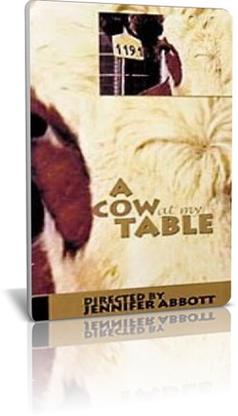
A Cow at My Table is a 1998 documentary film examining Western attitudes towards farm animals and meat.
Screenonline is a website about the history of British film, television and social history as documented by film and television. The project has been developed by the British Film Institute and funded by a £1.2 million grant from the National Lottery New Opportunities Fund.

The Directorate of Film Festivals in India was an organisation that initiated and presented the International Film Festival of India, the National Film Awards and the Indian Panorama. Although the Directorate helped appoint members of the jury panels each year, it had no input on which films are selected for consideration and which films ultimately win awards at the various functions it initiates.

In electrical engineering, a capacitor is a device that stores electrical energy by accumulating electric charges on two closely spaced surfaces that are insulated from each other. The capacitor was originally known as the condenser, a term still encountered in a few compound names, such as the condenser microphone. It is a passive electronic component with two terminals.

Chuck Amuck: The Movie is a 1991 documentary film about Chuck Jones's career with Warner Bros., centered on his work with Looney Tunes; narrated by Dick Vosburgh.
Neil Affleck is a Canadian animator, director, actor, and teacher. He has worked as an animation-timer and director on The Simpsons and Family Guy. As an actor, he appeared in the 1981 film Scanners and had a leading role in the 1981 film My Bloody Valentine. He also directed animated works such as Family Guy, Miss Spider's Sunny Patch Friends,Mike the Knight, and the 2009 Doki special. He contributed to six episodes of Rocko's Modern Life, five episodes of The Critic, and one full season of Pearlie, Affleck won the Norman McLaren award for his animated film "Hands" while still a student.
Stephen Holden is an American writer, poet, and music and film critic.
Bill Sharkey's Last Game is a 1909 American silent Western film directed by D. W. Griffith and starring Harry Carey in his debut film.
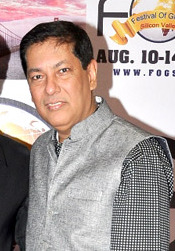
Taran Adarsh is an Indian film critic and trade analyst. He is best known for giving trade figures and box office updates on social media, as well as his reviews for Bollywood Hungama.

Bollywood Hungama, previously known as IndiaFM, is a Bollywood entertainment website, owned by Hungama Digital Media Entertainment, which acquired the website in 2000.
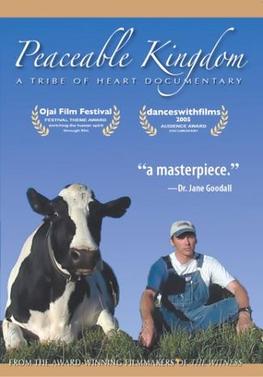
Peaceable Kingdom, produced in 2004 by Tribe of Heart, is a documentary about several farmers who refuse to kill animals and how they convert to veganism as a way of life.
The Houston Film Critics Society is a non-profit film critic unincorporated voluntary organization in Houston, Texas, in the United States. The group presents an annual set of film awards for "extraordinary accomplishment in film" in a ceremony held at the Museum of Fine Arts, Houston. The organization includes 37 film critics for print, radio, television, and internet publications in the greater Houston area. It counts San Antonio as an affiliate city and include its eligible critics among the collective.
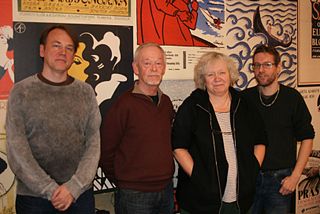
The Swedish Film Database is an Internet database about Swedish films, published by the Swedish Film Institute. It contains information about all Swedish films from 1897 onwards and foreign films that had cinema premiere in Sweden. It also provides many biographies of actors, directors, producers etc. who participated in Swedish films over the years. It is created with the support of the Bank of Sweden Tercentenary Foundation. The database comprises about 62,000 films and 265,000 people.
The Out In Africa South African Gay and Lesbian Film Festival (OIA) is a gay and lesbian film festival launched in 1994 to celebrate the inclusion, in the South African Constitution, of the clause prohibiting discrimination on the grounds of sexual orientation. The Festival set out to address the lack of visibility of Lesbian, Gay, Bisexual, Transgender and Intersex individuals (LGBTIs) in South African social and cultural life after decades of apartheid repression, to counter negative images of LGBTIs that prevail in traditional and religious communities, and to serve as a platform for discussion and debate about the situation of LGBTIs in a newly founded democracy.
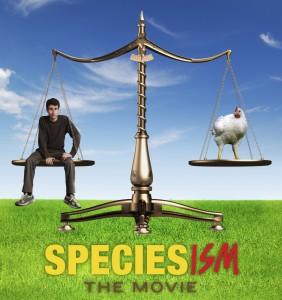
Speciesism: The Movie is a 2013 documentary film by American director Mark Devries. It explores the concept and practice of speciesism, the assignment of value to beings on the basis of species membership.

Vegucated is a 2011 American documentary film that explores the challenges of converting to a vegan diet. It "follows three meat- and cheese-loving New Yorkers who agree to adopt a vegan diet for six weeks."
Three Sisters is a 2012 Chinese documentary film directed by Wang Bing.
References
- ↑ John Hamilton, The British Independent Horror Film 1951-70 Hemlock Books 2013 p 21